They mysteriously rise from the Elbe as a reminder of the Hanseatic past of a city like Hamburg. These are the Blankenese Shipwrecks, and it’s easy to spot them when you follow the Falkensteiner Ufer along the Elbe.
When we visited Hamburg in the fall of 2021, these shipwrecks were the first thing we wanted to see. Mainly because it felt so surreal to know that there are ships in this state on the Elbe, not that far away from the city centre in Hamburg. And that you can easily spot them when you walk along the beach.
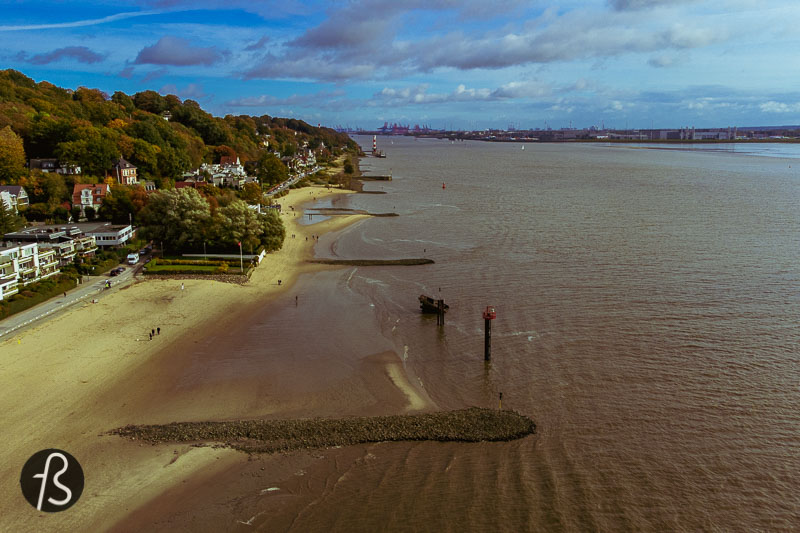
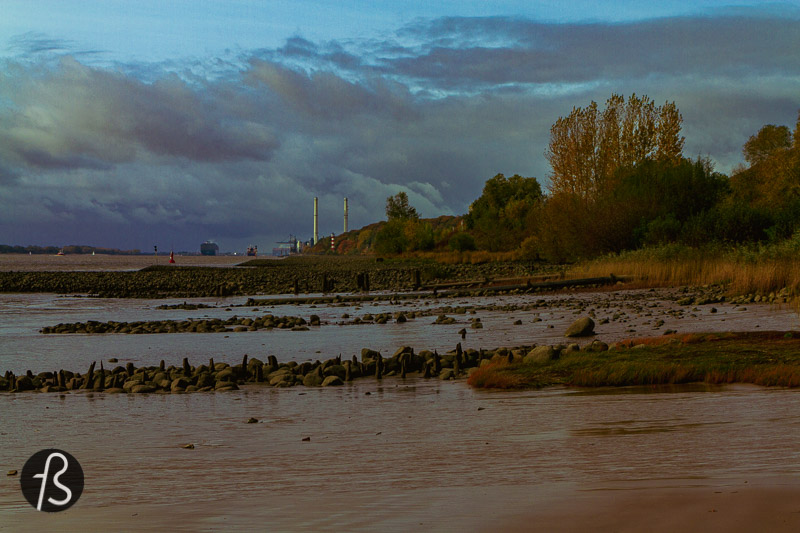
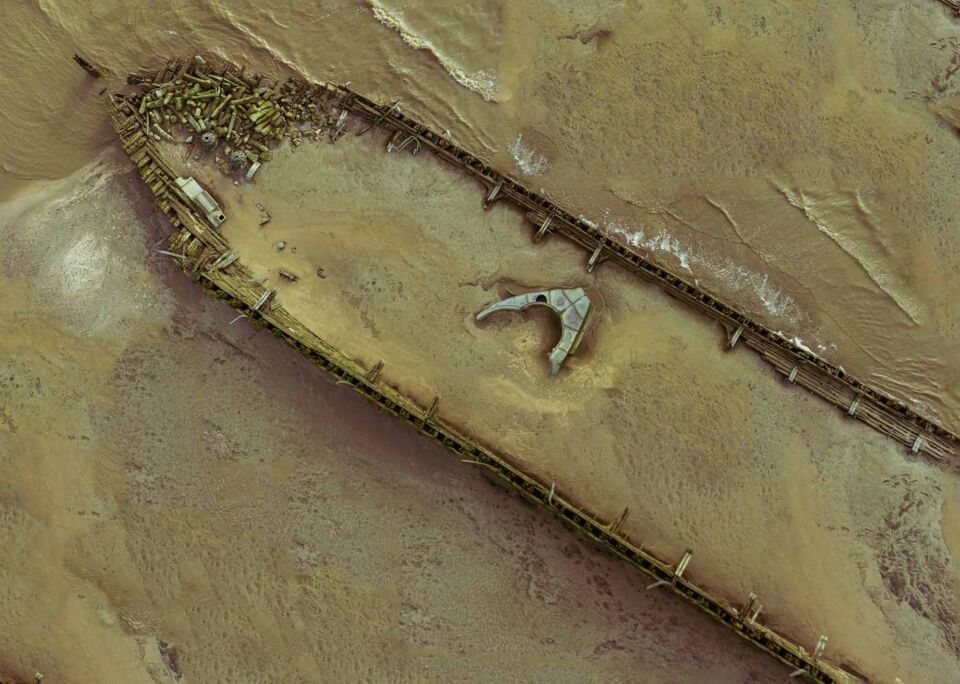
We were there with our friends from Canal Alemanizando, and we had fun flying our DJI Mavic Mini 2 and trying to find our way into one of the ships while we walked in the river mud. We are happy that we didn’t fall!
It’s pretty easy to spot the Blankenese Shipwrecks in the low tide, but we imagine that at least one of them might disappear from sight when the water is a bit higher. So, if you want to see this bizarre sight, keep this in mind.
The Blankenese Shipwrecks consists of two ships that wrecked around Hamburg years ago. Today, they serve as breakwaters to protect the Elbe shore. For some people in the city, it might be part of what it means to live in the largest harbour in Germany. For others, like us, it is a unique sight in a city filled with great places to visit.
The Polstjernan, the oldest Blankenese Shipwreck
Back in October 1926, the Polstjernan was on its way from Finland to England. An accident happened when the engine exploded while it was on the Kiel Canal. With a cargo that consisted of wood, it was ablaze in a few minutes, and there wasn’t much that could be done.
The ship was towed to Blankenese since the towing company was based there to avoid damage and blockage to the Kiel Canal. Since October 27, 1926, the Polstjernan has been in the same place, on the shore of the Elbe river.

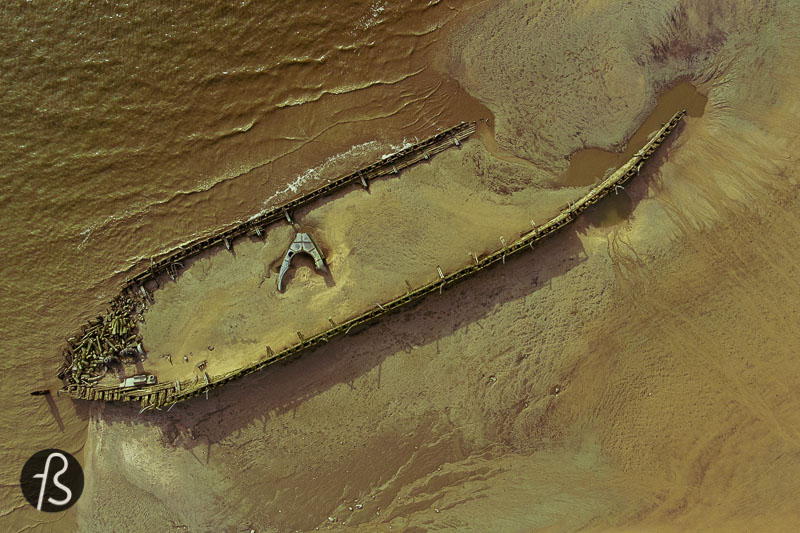
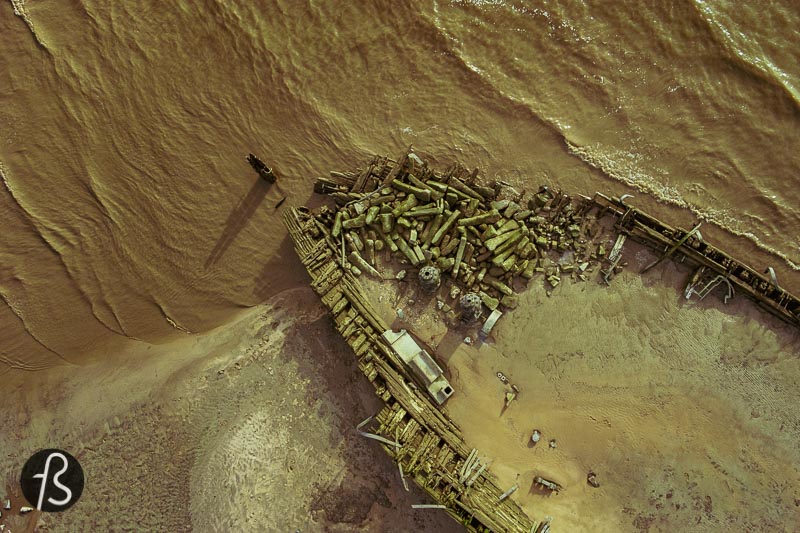
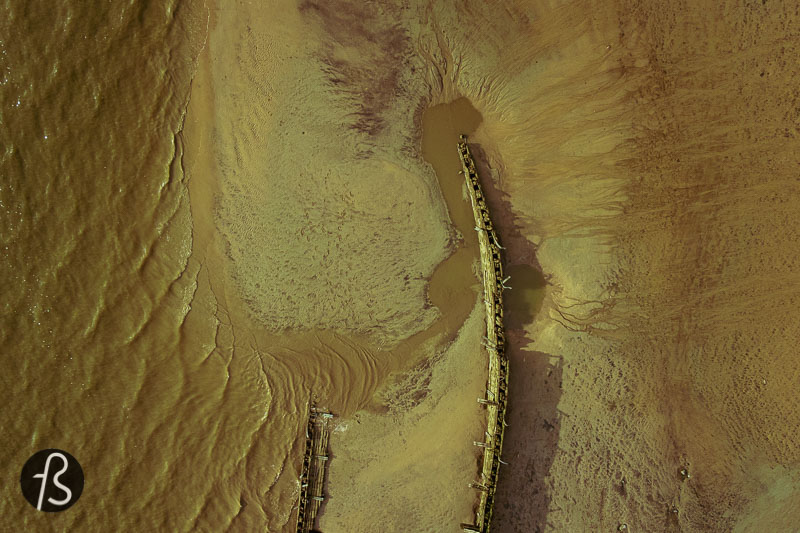
Initially, it was weighted down with stones and rocks and used as a breakwater. After the Second World War, back in 1947, scrap metal was added to it, and it holds its position until today.
While we researched the ship’s history, we discovered that its names after the North Star. It was built in the south of Finland in November 1919 and, when it was launched, it was considered the largest wooden ship ever built in Finland. Another fact that we enjoyed was learning that its homeport is Mariehamn, the capital of the Åland Islands and a place we visited and loved back in 2015.
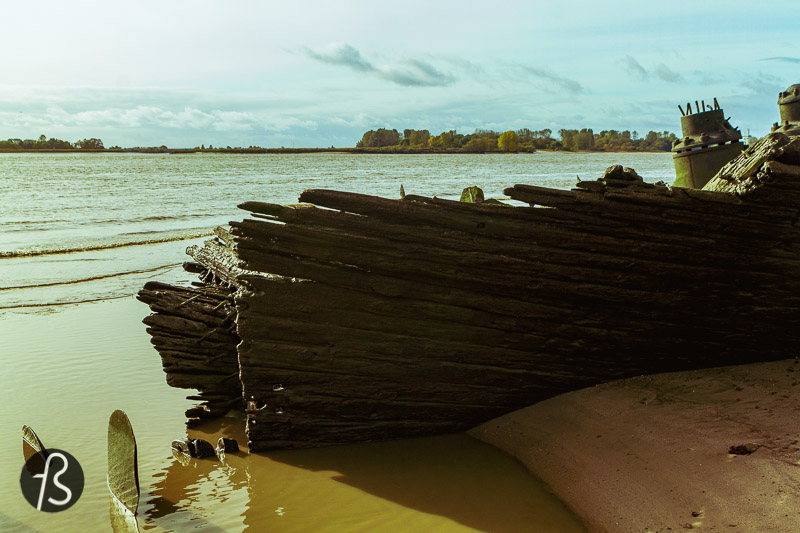
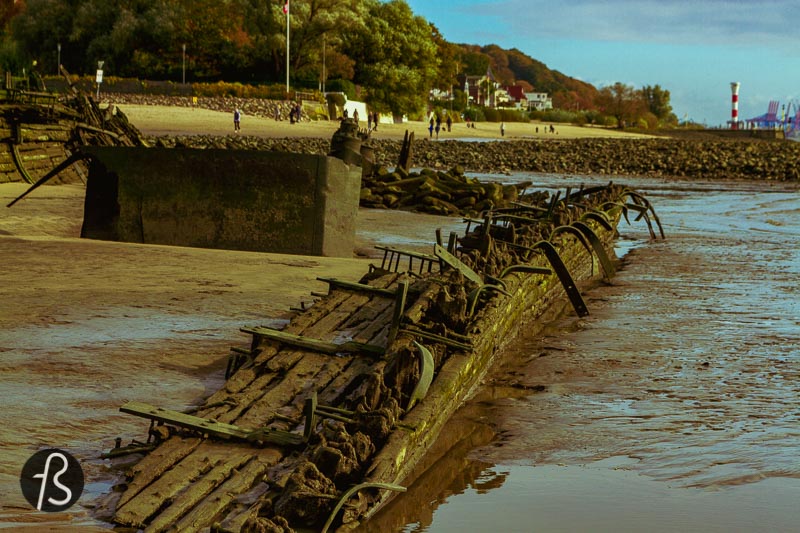
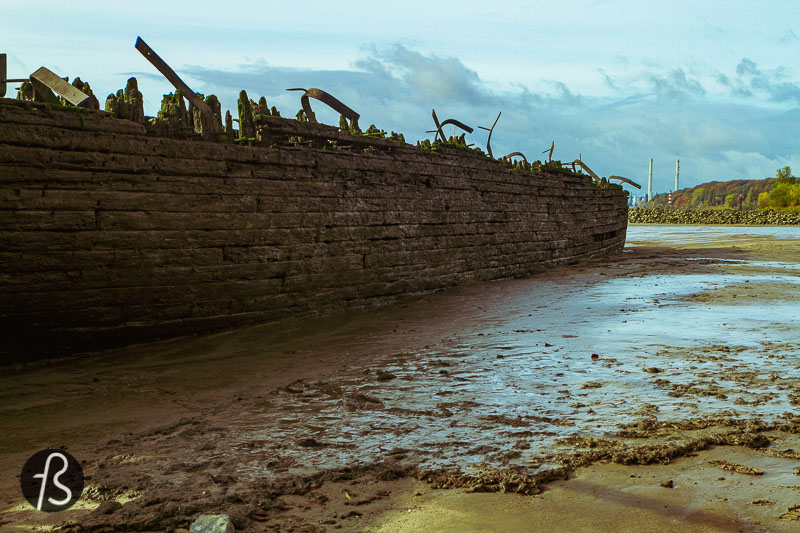
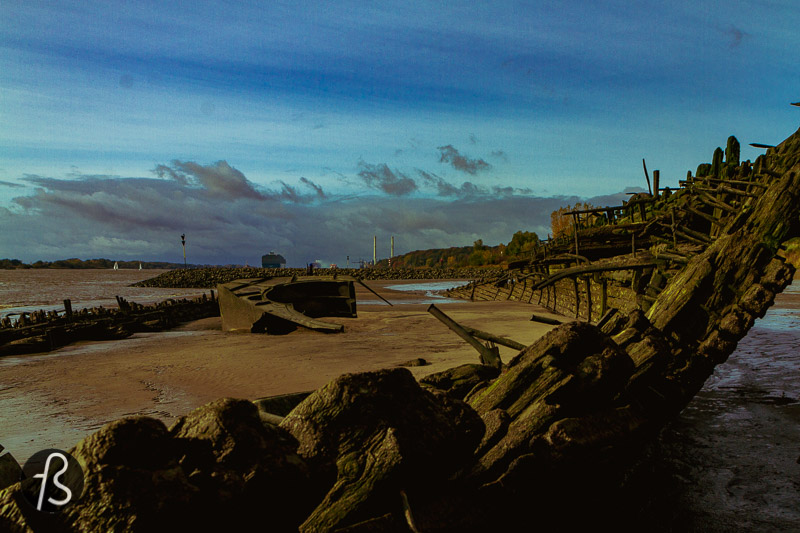
The barge Uwe, the most famous shipwreck on the Elbe river
In December 1975, in the shrouded Hamburg’s dense fog, an unfortunate accident took place in the Elbe river. A freighter known as Wiedau collided with a polish freighter called Mieczyslaw Kalinowski. The collision changed the course of Wiedau, and it went straight into Uwe.
The impact was so strong that it divided the vessel in two. The crew jumped into the waters of the Elbe. The Wieday capsized, and a crew member couldn’t find his way out and drowned. The other 16 members of the crew were saved when they swam to the Falkensteiner Ufer. The Mieczyslaw Kalinowski was the lucky ship here since it only suffered minor damage.
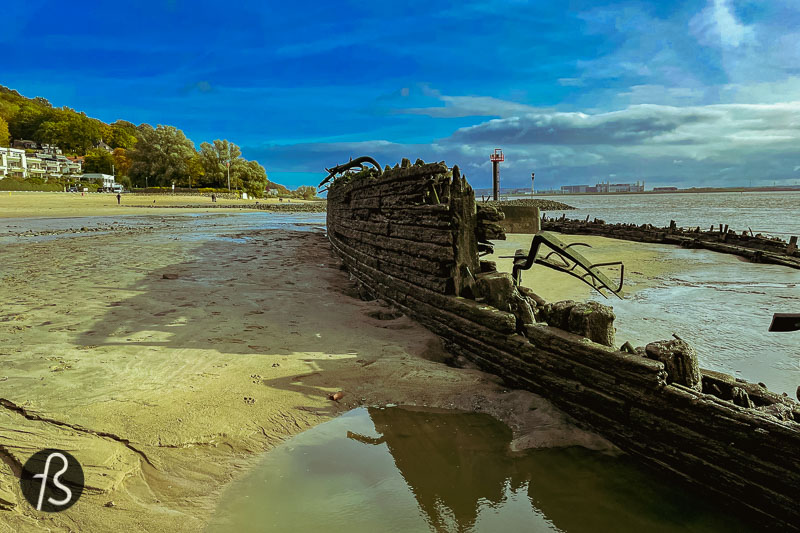


What remained from the barge Uwe was salvaged and scrapped, but the stern turned too heavy to be moved properly. After some work, it was moved to the Falkensteiner Ufer beach for further recycling, and there it remains until today.
The history of the Uwe, previous to its wreck, isn’t as fascinating as the Polstjernan. Uwe was built in a shipyard in Brandenburg an der Havel back in 1914. It was first called Fürstenberg, and it was put into service straight away. Its ownership changed a few times through the years, and, in 1973, it was renamed Uwe. Two years later, it crashed, and you already know the rest.

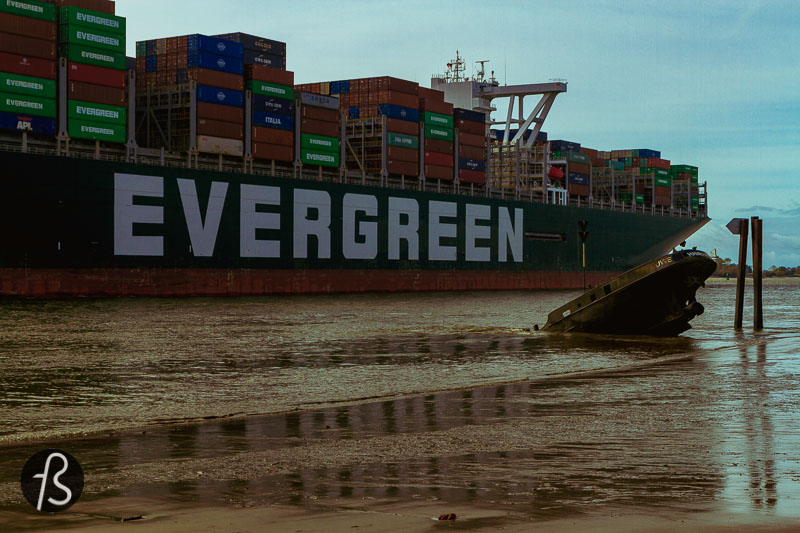
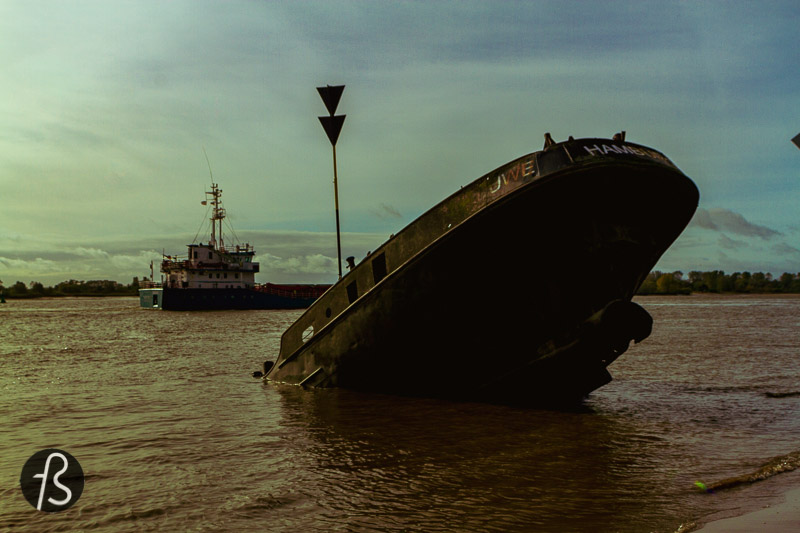
If you want to visit the Blankenese Shipwrecks, they are easily reachable from Hamburg by public transport. You can take the S-Bahn from Altona straight into Blankenese. From the station, you can walk down to the beach through this gorgeous neighbourhood filled with cute houses that follow down the hill. After you reach the beach, you will see a lighthouse; the shipwrecks will be positioned about 500 meters down the coast, in the direction opposite the city of Hamburg.
Coming from a city in the mountains of Brazil, more than 500 km away from the sea, it’s pretty interesting for me to visit something like this. When I first read about it online, I thought it sounded too surreal to be true. But the Blankenese Shipwrecks are genuine, and you can visit them quickly. Just follow the map below.
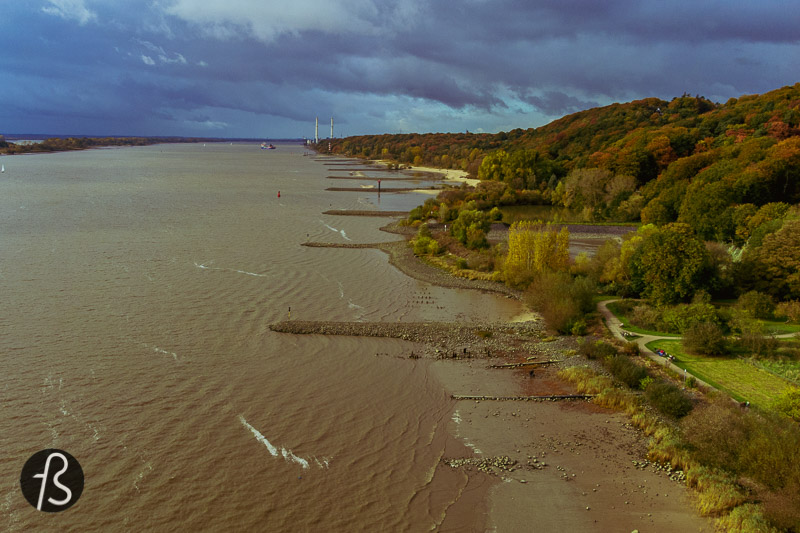


The Blankenese Shipwrecks in Hamburg
Falkensteiner Ufer, 22587
Hamburg, Germany